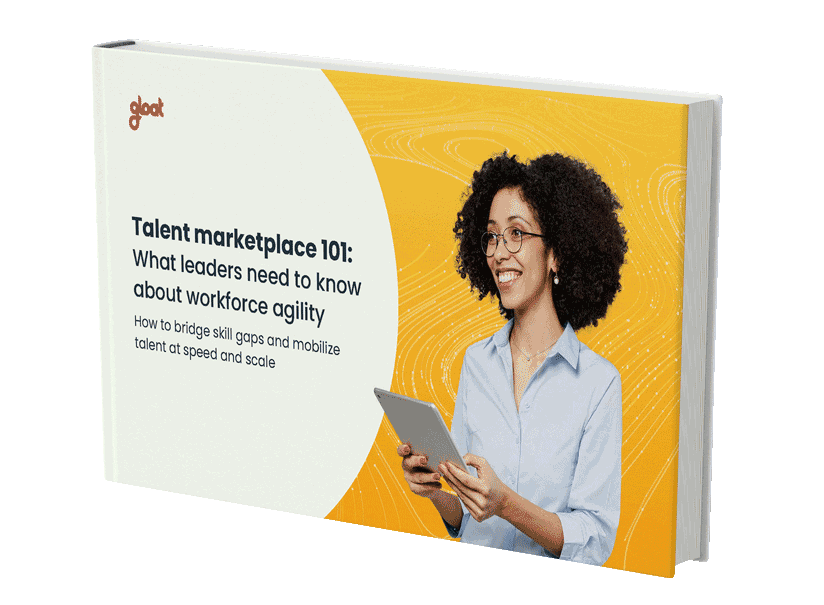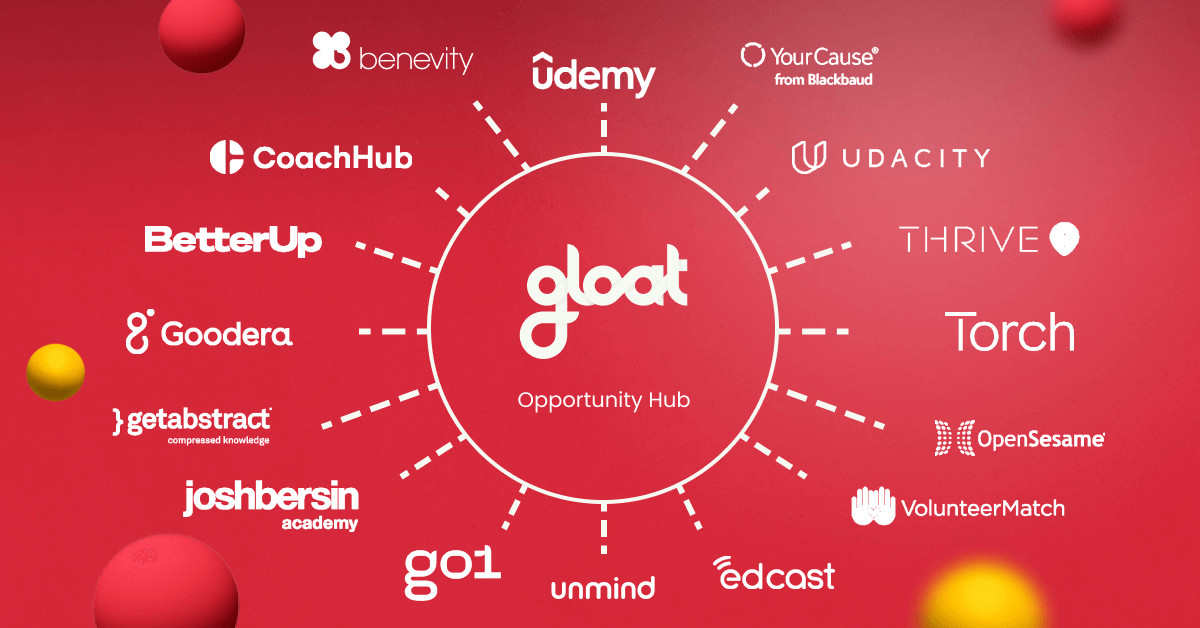Employee experience: what it is and how to improve it
Uncover best practices for maximizing satisfaction and engagement levels Regardless of your company’s industry, region, or headcount, there’s one factor that will make or break your success: employee experience. If your workers aren’t inspired by what they are doing and they don’t feel supported by their colleagues and managers, there’s no way that they’ll be

Uncover best practices for maximizing satisfaction and engagement levels
Regardless of your company’s industry, region, or headcount, there’s one factor that will make or break your success: employee experience. If your workers aren’t inspired by what they are doing and they don’t feel supported by their colleagues and managers, there’s no way that they’ll be able to perform to the best of their abilities.
Even if you don’t see these subtle drops in performance right away, your customers will feel it. Sub-par employee experience takes a toll on consumer satisfaction, output levels, and revenue potential. If you have any lingering doubts about the importance of employee experience, just take a look at the numbers: companies that invest in employee experience outperform those that don’t by 2X in terms of average profit.
To make matters worse, two-thirds of employees believe that workplace burnout levels are heading in the wrong direction. Consequently, there’s no question that getting employee experience back on track needs to be a priority for 2024. Fortunately, there are a few steps leaders can take to maximize their people’s satisfaction levels when it comes to their working experience.
The employee experience explained
From the moment a prospective employee reviews your job opening to their last day at your organization, everything they experience and engage with contributes to their employee experience. Employee experience is the sum total of the interactions your people have with their colleagues, managers, senior leadership, systems, policies, and both the physical and virtual workspace. Small details of day-to-day work life will impact the employee experience, as will major events and transitions.
To master employee experience, leaders must give their employees ample opportunity to share their feedback and go the extra mile to take their asks and suggestions into consideration. The employee experience is foundational to strong business performance. Sustaining strong customer relationships, improving products, and building a powerful and reputable brand all require the support and participation of your entire workforce. Employees’ encounters and interactions—positive and negative—will impact how hard they work, how much they collaborate, and whether or not they’re interested in improving their performance.
The 6 pillars of employee experience
There are 6 key components of employees’ daily lives that influence their overall work experience, such as:
#1. Company culture
Company culture is the vibe that you feel when you log on to start your work day or walk into the office—it can either motivate or stifle, energize or drain, empower or discourage its employees. It’s influenced by leadership styles and organizational structure, as well as a company’s ability to clearly communicate and unite employees around its mission and values.
#2. Well-being and work-life
Workplace well-being is under a spotlight—and it’s easy to understand why. While 70% of companies made additional wellness investments over the past 2 years, two-thirds of the workforce believes burnout is getting worse. Beyond on-site gyms and healthy lunches, companies must empower employees to take time for themselves as needed. Giving employees a greater sense of autonomy can help them make time for regular doctor’s visits, moments to recharge, and opportunities to unwind when they’re feeling overwhelmed.
#3. Physical environment
Working strict hours in a windowless basement is a very different experience than being able to choose your hours in a hybrid environment with access to modern office spaces and wellness programs. While the former is likely to detract from an employee’s overall work experience, the latter will likely help people concentrate better, be more productive, and feel more engaged in the work they’re doing.
#4. Technological environment
Imagine joining a company and learning on your first day that you’ll be using a laptop that came out 15 years ago and that you won’t have access to the systems you need to complete your daily tasks. When employees are dealing with subpar digital tools, it’s going to negatively impact how they feel about their employer. Forward-thinking organizations will invest in suitable technology for employees to get their work done efficiently with future developments in mind.
#5. Learning and development
Employees will feel more enthusiastic about their workplace if they’re being given opportunities to learn and grow. 68% of workers believe employer-provided upskilling is crucial when considering a new job and 48% say they would switch to a new job if it offered skills training opportunities.
#6. DEIB (Diversity, Equity, Inclusion, and Belonging)
If everyone in your organization feels included, seen, and empowered to achieve their full potential, they will be far less likely to seek out opportunities with other companies. The most inclusive companies look beyond statements and scorecards and strive to ensure all employees have equal access to a wealth of development opportunities that will help them turn their career dreams into realities.
The link between employee experience and employee engagement
Contrary to popular belief, employee engagement and employee experience are not one and the same. Instead, the two terms have a symbiotic relationship. Engagement is the outcome of a positive employee experience. It describes how employees feel about their organization and what they are willing to do as a result of that emotional attachment. When an employee is engaged, they feel connected to the organization and are willing to advocate for it.
Employee experience, on the other hand, is everything else. It broadly describes what it’s like to work in the organization and how employees feel about their experience within the organization. It encompasses everything from the employees’ feelings about their relationship with their managers and coworkers to the physical environment of the workplace to their ability to access the resources they need.
The organizational impact of positive employee experience
Employees with in-demand expertise and strong soft skills are almost impossible to find. Once you’ve battled to attract and hire quality employees, you don’t want to lose them. High turnover eats into your HR team’s time and your business’s bottom line. Investing in creating a positive employee experience is crucial to creating an engaged workforce who wants to stay with your company for the long haul.
According to research from author and futurist Jacob Morgan, the organizations that invest most heavily in employee experience are found 11.5X as often in Glassdoor’s Best Places to Work, 4.4X as often in LinkedIn’s list of North America’s most in-demand employers, and 2X as often in the American Customer Satisfaction Index.
How to improve employee experience
If you’re looking to level up employee experience at your organization, consider implementing the following 5 best practices:
#1. Cultivate a supportive work environment
Employees should feel supported and empowered from the moment they step into the office or log onto their computers. Beyond working closely with managers, many companies are launching mentoring programs so that workers can receive personalized guidance from someone in their organization who possesses the skills they wish to hone. To ensure that people are matched to mentors based on their skills and career aspirations, companies are using talent marketplaces to generate suggestions for mentor-mentee pairings that are rooted in shared goals.
#2. Invest in leadership quality
Leaders can’t underestimate the profound impact that an employee’s relationship with their manager has on their overall opinion of their organization. In fact, surveys show that employees’ managers are the most influential factor in employee experience. When managers are inclusive and supportive, employees are more likely to feel committed, engaged, and inspired to do their best work. To set new managers up for success, many companies provide training and coaching to help everyone develop strong leadership skills.
#3. Expand opportunities for growth
Employees are capable of so much more than the roles they were hired for. Everyone has a unique blend of skills and experiences that they’re bringing to the table, with some capabilities sitting outside of the responsibilities associated with their day-to-day roles.
Rather than letting these competencies go untapped, companies are turning to skills intelligence tools like Gloat’s Skills Foundation to get a clear picture of the capabilities their people have as well as skills that are on the rise and decline. Many of these organizations also use talent marketplaces to present employees with recommendations for projects, gigs, and mentoring opportunities that align with the skills they wish to build.
#4. Foster a collaborative culture
The most compelling cultures will empower employees to connect with their peers and their company’s mission and values to get a job done. When employees know they can turn to their colleagues for support they will become more willing to have their backs as well, creating a culture where everyone lifts each other up and building a sense of camaraderie amongst peers. Some companies use talent marketplaces to facilitate cross-functional collaboration. Hiring managers can spin up teams to complete new projects based on people’s capabilities and capacities.
#5. Champion diversity and inclusion
Nearly 50% of CEOs count building an inclusive workforce as high on the list of their challenges. Promoting inclusion and equity requires more than a subtle shift; it’s about fundamentally reimagining workforce culture to democratize career development and empower employees from all walks of life.
Rather than letting subjective criteria hinder development and downsize talent pools, inclusive organizations embrace AI-powered technology to equalize access to opportunities for all employees. Talent marketplaces match people to opportunities based on their skills and experiences rather than potentially bias-inducing factors like where they want to school or their networks.
To learn how your organization can harness a talent marketplace to take employee experience to the next level, check out our Talent Marketplace 101 guide.





